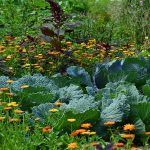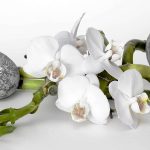Jade plants have become popular houseplants due to their numerous advantages. One of the main benefits of owning a jade plant is its low maintenance nature, as it requires minimal care and attention. Additionally, these plants are known for their adaptability to low-light environments, making them ideal for indoor spaces with limited sunlight.
However, it is important to note that jade plants can be prone to overwatering, which can lead to root rot and subsequent plant death. Therefore, it is crucial to strike the right balance in watering frequency to prevent these disadvantages and ensure the longevity of your jade plant.
Advantages Of Jade Plant
The Jade Plant, also known as Crassula ovata, is a popular succulent plant that offers several advantages to its owners. Its unique characteristics make it a great addition to any indoor or outdoor space. Let’s explore some of the key advantages of having a Jade Plant:
Drought-tolerant
The Jade Plant is highly drought-tolerant, making it an ideal choice for individuals who may not have a green thumb or tend to forget to water their plants regularly. This resilient succulent has adapted to survive in arid conditions and store water in its thick, fleshy leaves and stems. Its ability to withstand extended periods without water makes it a low-maintenance option for busy individuals.
Low-maintenance
If you’re looking for a plant that requires minimal care and attention, the Jade Plant fits the bill perfectly. It doesn’t demand constant monitoring or frequent watering. In fact, overwatering can be detrimental to this plant’s health. All you need to do is provide it with well-draining soil, moderate sunlight, and occasional watering when the soil feels dry. With its low-maintenance nature, the Jade Plant is an excellent choice for those who want to enjoy the beauty of indoor plants without the hassle of rigorous care.
Air-purifying
Besides its aesthetic appeal, the Jade Plant also contributes to improving the air quality in your surroundings. It has been proven to be effective in removing toxins such as benzene and formaldehyde from the air, which are commonly found in indoor environments. The Jade Plant releases oxygen during the day and absorbs carbon dioxide at night, making it an excellent natural air purifier. Having a Jade Plant in your home or office can create a healthier and more refreshing atmosphere.
In conclusion, the advantages of owning a Jade Plant are numerous. Its ability to thrive in drought conditions, low maintenance requirements, and air-purifying qualities make it a desirable choice for plant enthusiasts and beginners alike. Whether you have limited gardening experience or a busy schedule, the Jade Plant is a resilient and beautiful plant that can bring joy and benefits to your environment.
Disadvantages Of Jade Plant
The disadvantages of the Jade Plant include its susceptibility to overwatering, which can lead to root rot, as well as its toxicity to pets if ingested. Additionally, the plant requires a good amount of natural light to thrive, making it unsuitable for low-light environments.
Jade plants are popular houseplants known for their attractive fleshy leaves and low-maintenance requirements. However, like any other plant, jade plants also come with their fair share of disadvantages. It is important to be aware of these drawbacks before deciding to bring a jade plant into your home.
Toxicity To Pets
One of the main disadvantages of jade plants is their toxicity to pets, especially cats and dogs [^1^]. If ingested, the plant’s sap can cause gastrointestinal upset, vomiting, and diarrhea in pets [^2^]. It is important to keep jade plants out of reach of curious pets, or consider choosing pet-friendly alternatives if you have furry friends in your home.
Prone To Overwatering
Jade plants are succulents, meaning they store water in their leaves and stems to survive in arid conditions. While they can tolerate some neglect, overwatering is a common problem with jade plants [^3^]. The roots of jade plants are sensitive to excessive moisture, leading to root rot and ultimately the death of the plant. It is crucial to allow the soil to dry out between watering and avoid overwatering, as this can be detrimental to the health of your jade plant.
Limited Aesthetic Variety
Another drawback of jade plants is their limited aesthetic variety compared to other houseplants. Jade plants typically have thick, oval-shaped leaves that are green in color, with some variations in the shades of green. While this simplicity can be appealing to some, others may find it less visually stimulating compared to plants with a greater range of leaf shapes, colors, and textures. If you are looking for a plant that offers a wide variety of visual options, a jade plant may not be the best choice for you.
Overall, while jade plants have many advantages, such as their resilience and low-maintenance nature, it is important to consider their disadvantages as well. The toxicity to pets, proneness to overwatering, and limited aesthetic variety are aspects that should be taken into account when deciding whether to introduce a jade plant into your home.
Frequently Asked Questions Of What Is The Advantage And Disadvantage Of Jade Plant?
What Are The Advantages Of Having A Jade Plant?
Jade plants have several advantages, including their ability to purify the air by removing toxins, their low maintenance requirements, and their beautiful, lush appearance. They are also believed to bring good luck and positive energy to the home or office.
Is The Jade Plant Poisonous To Pets?
Yes, the Jade Plant is toxic to pets, especially cats and dogs. Ingesting any part of the plant can cause symptoms like vomiting, diarrhea, and stomach pain. It is important to keep the Jade Plant out of reach of pets or consider choosing pet-friendly plants if you have furry friends at home.
How Often Should I Water My Jade Plant?
Jade plants are succulents and do not require frequent watering. They prefer well-draining soil and should be watered thoroughly when the top inch of soil feels dry. Overwatering can lead to root rot, so it is better to underwater a Jade Plant than to overwater it.
Can I Keep My Jade Plant Outside?
Jade plants are native to arid regions and thrive in warm, dry conditions. They can be kept outdoors, but they should be brought inside if the temperature drops below 50°F (10°C) or if frost is expected. Avoid placing the Jade Plant in direct sunlight as it can scorch the leaves.
Conclusion
To sum up, the jade plant offers numerous advantages, such as its low maintenance and ability to purify indoor air. Its vibrant green leaves and feng shui attributes also make it a popular choice for home decor. However, it’s important to note that this plant can be toxic to pets and humans if ingested, so precautions should be taken.

